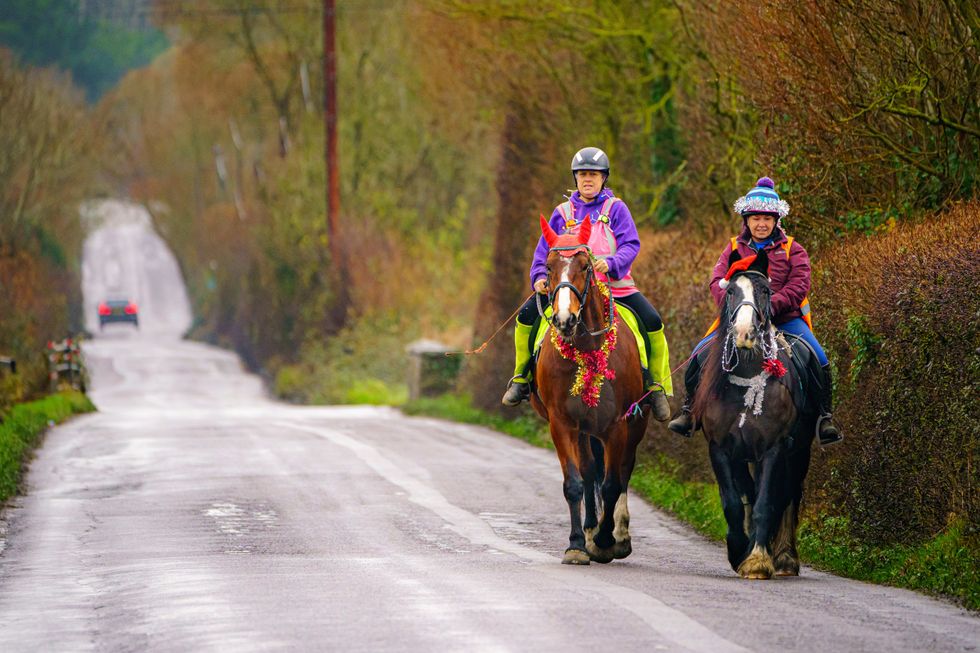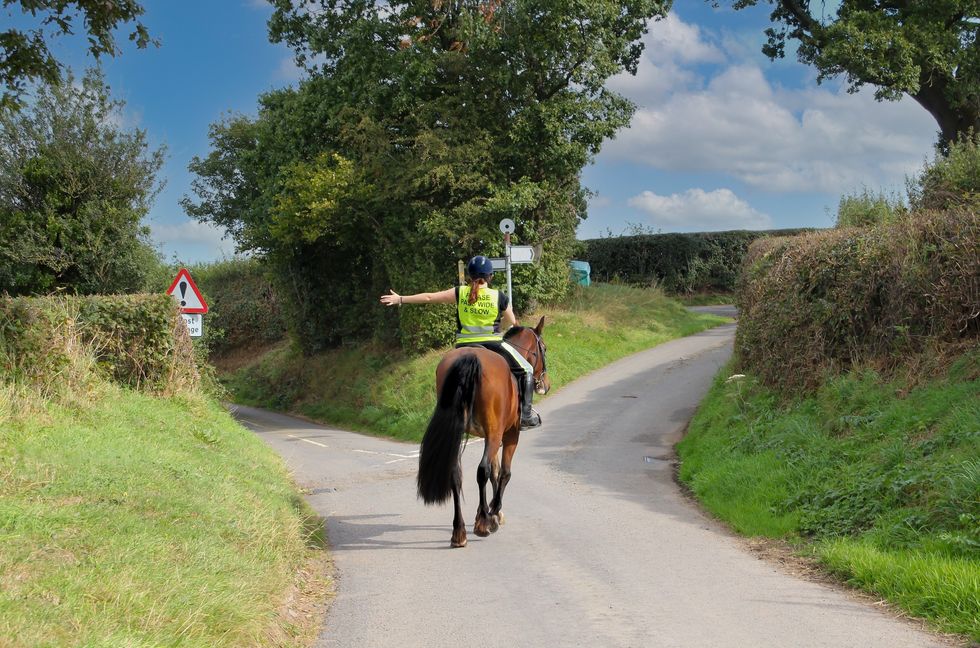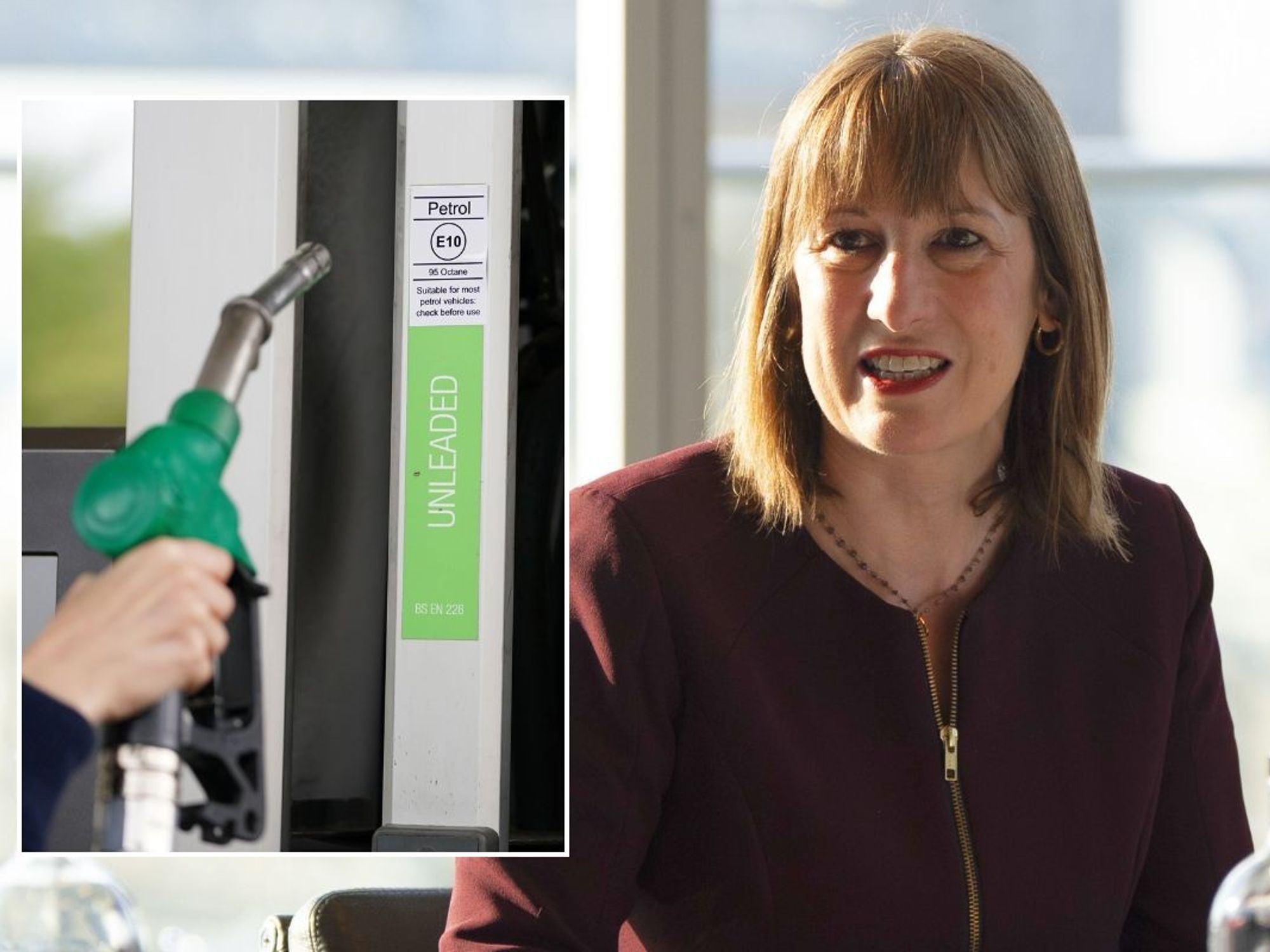Motorists risk hefty penalties for failing to slow down to 10mph under Highway Code rules

The Highway Code requires drivers to slow down to 10mph when passing horses on the road
Don't Miss
Most Read
Latest
Drivers have been warned they could be fined for failing to follow the Highway Code and slow down to 10mph while travelling near horses.
It comes after experts warned that as summer approaches, motorists are more at risk of breaking traffic rules for driving near animals on UK roads.
Rule 215 of the Highway Code requires drivers to be particularly careful of horse riders and horse-drawn vehicles while on the road.
It also requires drivers to slow down to at least 10mph and leave a greater distance on the road to allow horses to safely pass by the vehicle.
Do you have a story you'd like to share? Get in touch by emailing motoring@gbnews.uk

Drivers must slow down and leave at least two metres of space when passing horses
|GETTY/GOV.UK
The rule states: "Always pass wide and slowly. When you see a horse on a road, you should slow down to a maximum of 10mph. Be patient, do not sound your horn or rev your engine. When safe to do so, pass wide and slowly, allowing at least two metres of space.
"Feral or semi-feral ponies found in areas such as the New Forest, Exmoor and Dartmoor require the same consideration as ridden horses when approaching or passing. Look out for horse riders’ and horse drivers’ signals and heed a request to slow down or stop."
It also requires drivers to take "great care" and treat all horses as a potential hazard, as they can be unpredictable while on UK roads.
Drivers who fail to follow this rule risk breaking the Road Traffic Act 1988, which applies when a driver hits dogs, goats, horses, cattle, donkeys, mules, sheep, or pigs.

Rule 215 requires drivers to give extra space when overtaking pedestrians or horse riders
| PABryn Brooker, head of road safety at Nextbase, warned: "If you do hit an animal, following the proper procedure is essential to avoid legal penalties. Pull over safely with hazard lights on and approach injured animals with extreme caution, as they may be frightened and aggressive.
"Having a dashcam provides crucial evidence that could protect you from both legal penalties and insurance issues. This footage proves you weren't at fault and took appropriate action, potentially saving thousands in disputed claims and helping establish the facts if legal questions arise."
The law requires drivers to report this to the police, with motorists who fail to do so facing significant prosecution, including penalty points and fines up to £5,000.
Experts from Bumper explained that horse riders are "vulnerable road users" who require drivers to slow down and maintain at least two metres of space.
LATEST DEVELOPMENTS:
They detailed: "This is crucial to prevent accidents caused by spooked horses, which can react unpredictably to perceived threats. Most comprehensive car insurance policies will cover the cost of a horse damaging a vehicle, provided it wasn’t the driver’s fault."
The experts added that adhering to Rule 215 of the Highway Code by passing wide and slow is "essential to ensuring rider and driver safety".
In January 2022, under the Conservative Government, the Highway Code was changed to include greater safety measures for pedestrians as well as introduce new rules for how drivers interact with animals on the road.
The changes followed a public consultation which ran between July and October 2020 and received more than 20,000 responses from the public. It found that most people who responded were in favour of new safety measures for pedestrians and animals.

The Highway Code was updated in 2022 to include more safety measures for pedestrians and animals
| GETTYThe Department for Transport explained at the time: "The Highway Code is essential reading for everyone. It’s updated regularly, so it’s important that everyone reads it, not just learner drivers.
"Many of the rules in the code are legal requirements, and if you disobey these rules, you’re committing a criminal offence. If you do not follow the other rules in the code, it can be used as evidence in court proceedings to establish liability."
Experts at Bumper stated that sudden changes in a driver's behaviour, such as sounding the horn or revving the engine, "can cause a horse to panic and move erratically".
They added that drivers are more at risk of breaking the rules in rural areas, where encounters with horses are more common. "Awareness and caution can significantly reduce the risk of accidents and serious injuries," they shared.










